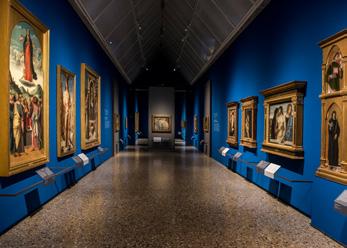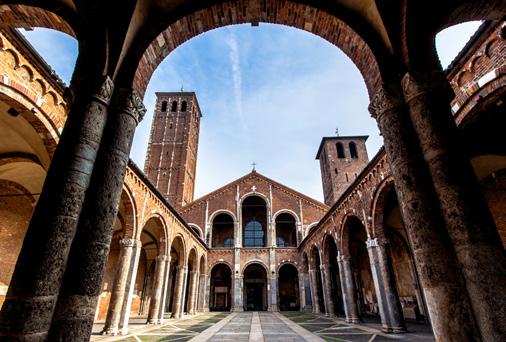
6 minute read
TOP IN TOWN
15 12
[ SIGHTSEEING ] Top in Town
Advertisement
3
1
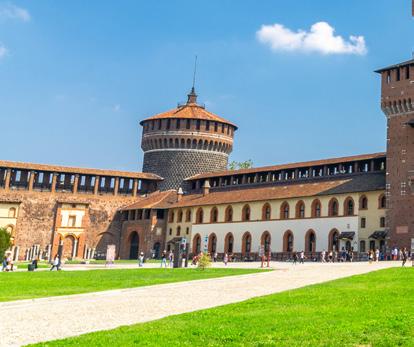
© MARCOCIANNAREL/SHUTTERSTOCK.COM
10
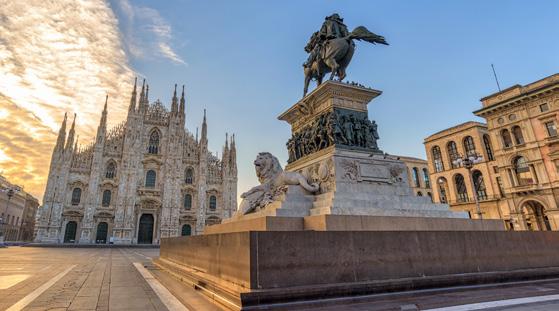
© NOPPASIN WONGCHUM/SHUTTERSTOCK.COM
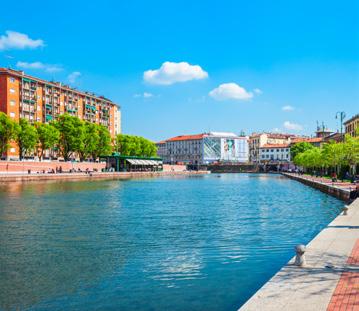
DUOMO 1
Among one of the most important Gothic buildings in the world, the church constructed over a period of 450 years is the symbol of Milan. To experience the Duomo at its most majestic you must ascend to the roof. Map F4
GALLERIA VITTORIO EMANUELE II 2
Sometimes known as “the living-room of the Milanese”, this elegant, four-storey arcade, housing luxury cafés and famous designer shops, is covered by a glass barrel vault and a beautiful glass cupola. Map F4
CASTELLO SFORZESCO 3
The ancient seat of the ruling Visconti, it was later rebuilt by Francesco Sforza and is now simply known by the Milanese as “Il Castello”. It houses a number of interesting museums and libraries. Its park is a favourite with old and young alike. Map E4
CENACOLO VINCIANO 4
One of the most famous attractions in the world, “The Last Supper” by Leonardo da Vinci is a 15th century large mural painting representing the scene of the last supper of Jesus narrated in the Gospel. This fragile masterpiece was painted by Leonardo using a technique that was chemically imperfect and by the early 16th century it has started to flake and decay, resulting in numerous restorations. Map D4
PALAZZO REALE 5
Formerly the residence of all those who governed Milan, from Napoleon to the Royal House of Savoy, the Royal Palace is currently one of the most important cultural centres in the city, hosting exhibitions of international renown. Near the Duomo, it’s the perfect place to escape the crowds of the Duomo’s square. Map F5
PIAZZA SCALA 6
The perfect location for the Gallerie d’Italia Museum and the opera house Teatro alla Scala. In the center of the square is the monument dedicated to Leonardo da Vinci. Map F4
MONTENAPOLEONE DISTRICT 7
Milan is known as one of the shopping capitals of the world and via Montenapoleone, together with the Golden Quad, is entirely given over to luxury shopping. Here the most important fashion designers offer their creations. Map F4-G4
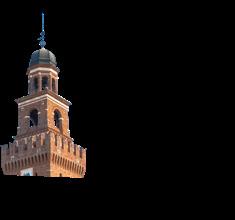
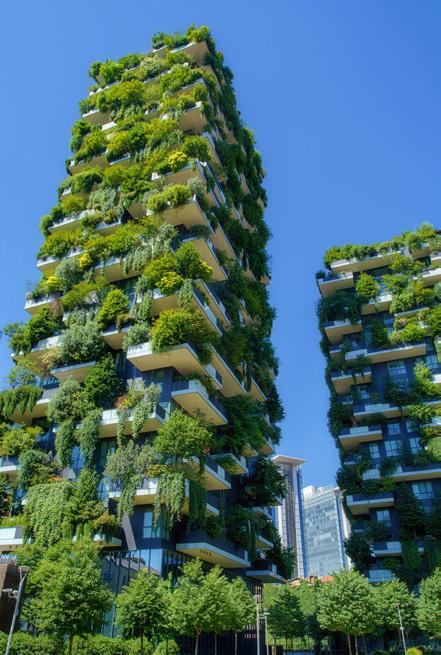
7 13
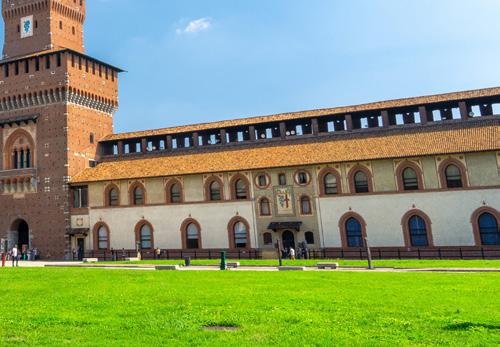
© ALIAKSANDR ANTANOVICH/SHUTTERSTOCK.COM
SEE MAP PAGE 74
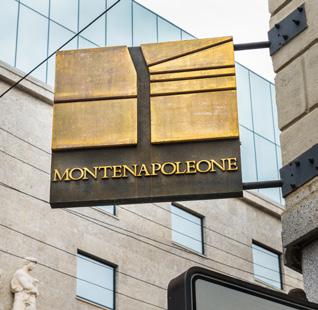
© SAIKO3P/SHUTTERSTOCK.COM © ALEMASCHE72/SHUTTERSTOCK.COM
BRERA DISTRICT 8
This is an artsy neighbourhood which really comes to life at night. The Pinacoteca di Brera is one of the most important museums in Milan. Its permanent collections offer a wealth of exceptionally good Italian and foreign masterpieces. Map F3
AMBROSIANA 9
The Picture Gallery contains several exquisite works of art from the 15th through 17th centuries. The Biblioteca Federiciana has on show Leonardo’s Codex Atlanticus. the Pinacoteca is exhibiting the preparatory Cartoon for The ‘School of Athens’, one of the best-known paintings by Raphael. Map F5 ago to ferry people and merchandise to Milan. This network was perfected in 1457 by Leonardo da Vinci. Today, the area is bursting with trendy dining and nightlife spots. Map E6
SAN SIRO STADIUM 11
With a capacity of 80,000 seats, it is the largest stadium in Italy and the 4th in Europe. Off Map
SANT’AMBROGIO 12
One of the most ancient churches in Milan, it was built in 379-386 A.D., in an area where martyrs had been buried. Map E5
PORTA NUOVA DISTRICT 13
A vibrant, futuristic district overlooking two neighbourhoods: the Garibaldi and Isola districts. The heart of the area is the large raised square dedicated to architect and designer Gae Aulenti. Just a little further on you will encounter the Bosco Verticale with the new Biblioteca degli Alberi. Map S2
TRIENNALE MILANO 14
Since 1923 this is an international institution which organises exhibitions and events about arts, designs, architecture, fashion, cinema, photography and theatre. Map D3
CIMITERO MONUMENTALE 15
A real outdoor museum catering, on the one hand to the whims of the elite of Milan’s society, and on the other to works of art by famous sculptors of various eras. Map E1
DUOMO DI MILANO
A PREMIER SYMBOL OF THE CITY
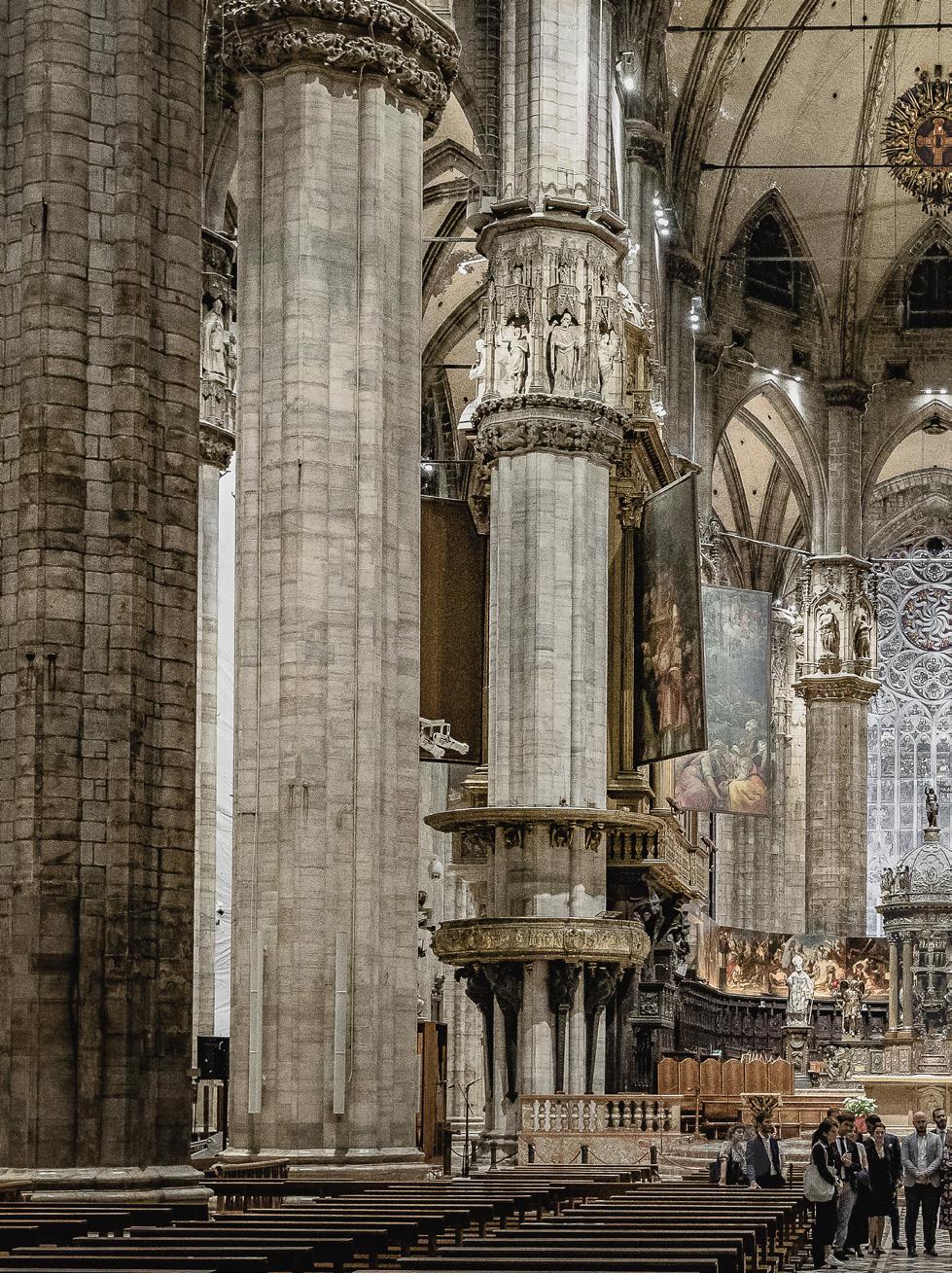
−After crossing the threshold of its 18th century façade in Candoglia marble, the interior of the Cathedral is revealed in all its majesty. One of the most important Gothic buildings in the world, the church, constructed over a period of 450 years (begun 1386), is the symbol of Milan. Built in the shape of a Latin cross, the cathedral is divided by soaring pillars into five naves, the largest of which measures 45 metres in height. Its inside columns measure 3 and a half metres in diameter.
−The interior boasts an apse with a large rose window, stained glass windows decorated with episodes from the Bible, chapels and high marble columns with capitals featuring statues of saints.
−To experience the Duomo at its most majestic you must ascend to the roof (either by elevator or by steps) where you will be surrounded by an outburst of pinnacles, turrets and marble statuary and, naturally, the city’s famed golden “Madonnina”. Here you can wander among 135 spires and 3,400 statues.
−Guided tours for small groups help visitors learn about the secrets behind the Duomo’s construction. The tour starts from the back of the choir which leads to the Crypt housing the tomb of San Carlo Borromeo, and then moves on to the Archaeological Area where you’ll find the remains of the Battistero di San Giovanni alle Fonti, dating back to 397 A.D. This is where Sant’Ambrogio christened St. Augustine. Next is the old Basilica of Santa Tecla (4th century).
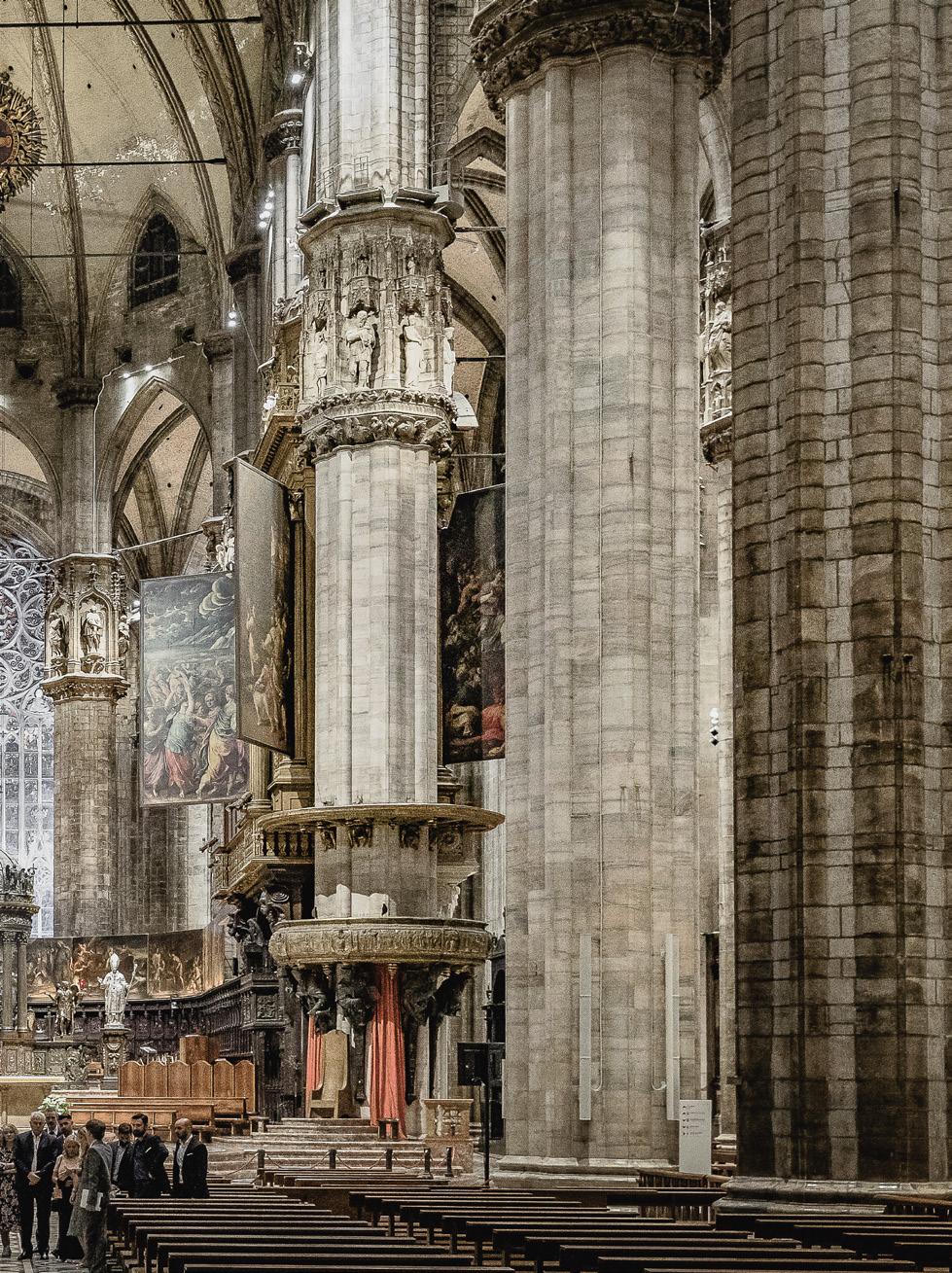
−Before accessing the Cathedral and its treasures, visit the nearby Museo del Duomo, located inside Palazzo Reale. The museum houses more than 150 masterpieces from the 15th century to the present time, including statues, architectural models, plaster casts, terracottas and paintings.
−If you’re on a tight schedule but want to learn more about the secrets of the Duomo, you can take advantage of the new Duomo Milano App for smartphones, featuring images and content in 9 languages including Italian, English, French, German, Spanish, Russian, Chinese, Japanese and Portuguese.
www.duomomilano.it
PH © VENERANDA FABBRICA DEL DUOMO
PORTA NUOVA
AN UPWARD SPIRALING CITY
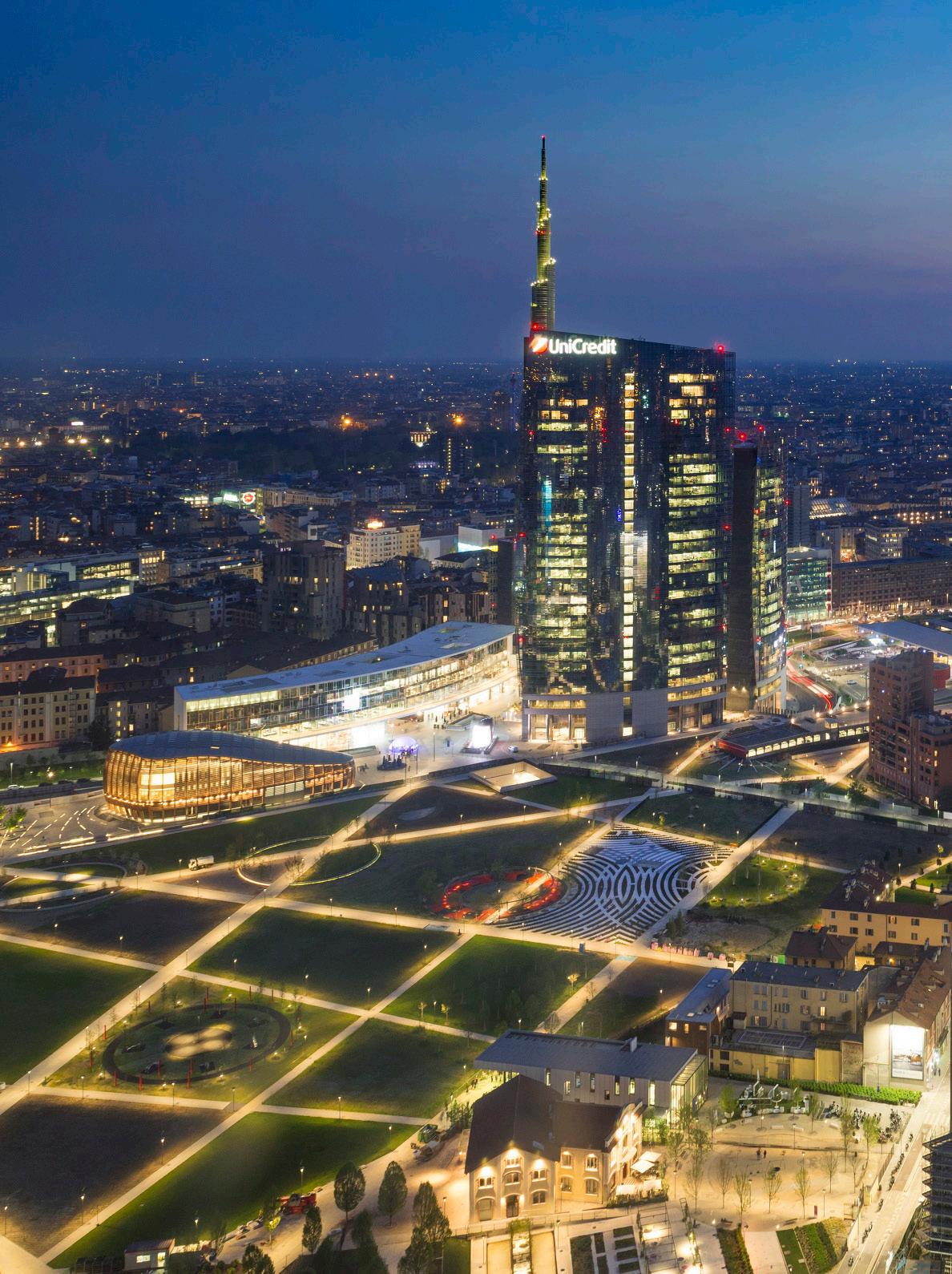
−Porta Nuova is a sprawling area, the result of a project
of urban and architectural
redevelopment involving the area that leads from the Porta Garibaldi railway station to Piazza della Repubblica, up to Palazzo Lombardia.

−In 2005, an architectural project curated by American real estate developer Hines focused on transforming the area into a technological hub comprising more than twenty buildings including skyscrapers, offices, cultural centres and urban residences.
−Several of Milan and Italy’s highest and most innovative skyscrapers, including the futuristic CityLife complex (visible in the background), are located in the Porta Nuova district. Among these, the Torre UniCredit –housed in the vibrant Piazza Gae Aulenti -, the Torre Solaria – the highest residential skyscraper in Italy-, the Torre Diamante and the green complex of the Bosco Verticale featuring hanging gardens designed by Stefano Boeri.
−The large public park in the middle of the neighbourhood, known as the BAM Biblioteca degli Alberi, extending over an area of 90,000 sq.m., was designed to provide a vast number of interconnecting pedestrian paths and to create a real botanical library. The park features over 450 trees and 90,000 different plant species, plus recreational areas, themed circular forests, teaching paths and pedestrian and bike paths. In summer, the park is also used to host outdoor concerts and events.



